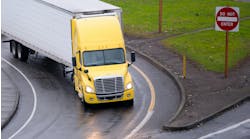Some motor carriers using older electronic logging devices (ELDs) are discovering they may soon need to change or upgrade them, even though they have been self-certified under the federal mandate.
The reason has nothing to do with the upcoming deadline to phase out use of automatic onboard recording devices (AOBRDs). Instead, it is related to the plan by U.S. cellular carriers to phase out older networks, freeing up spectrum for faster 4G LTE and 5G wireless devices.
Verizon previously announced it will complete its 2G and 3G shutdown at the end of 2019, while AT&T expects 3G coverage to end in 2022. T-Mobile and Sprint have not confirmed plans, but a shutdown is expected by 2022.
Even before that happens, experts are warning that a drop in the number of total 3G cell sites across the United States could constrict their communications to one channel.
The sunsetting of 3G means even fleets that are fully compliant with the mandate need to “make sure the equipment they have in place is on a network that will give them adequate coverage going into the next couple of years,” explained Doug Schrier, vice president of product and innovation for Pegasus Transflo.
While some vendors will be able to update devices for 4G/LTE compatibility through a firmware or software update, for others with integrated 3G cellular capabilities, a replacement of the device will likely be necessary to ensure advanced compatibility.
While the timelines to stop using AOBRDs and the sunsetting of 3G are different, many fleets are wisely choosing to tie the two together, said Eric Witty, vice president of product for Trimble’s Transportation Division.
Like many other ELD and telematics providers, Trimble has already been offering LTE-enabled devices for an extended period. So has Verizon Connect, said Walter Kutschal, product manager for Verizon Connect.
“A solid network is key to compliance and can help ensure required data is adequately collected and transmitted to enforcement as intended,” Kutschal explained. “A reliable network and solution can help ensure a more seamless migration.”
Editor's note: This is the fourth part of a week-long series looking at what fleets need to do ahead of the December deadline to end use of AOBRDs. See previous stories.



